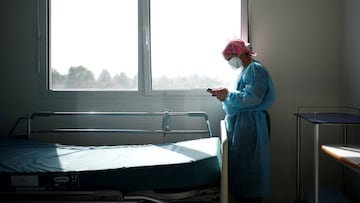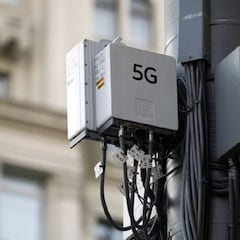Difference between social distancing, quarantine and isolation
New words and terms have entered our lexicon during the coronavirus pandemic but what do they mean and how should we act within the given guidelines.

The competition for Word of the Year 2020 is stiff. Quarantine, social distancing, confinement, isolation are all in the race. But what do they all mean in relation to the current coronavirus pandemic and the measures it has brought upon us.
What does social distancing mean?
According to the Center for Disease Control and Prevention, social distancing means:
- Stay at least 6 feet (2 meters) from other people
- Do not gather in groups
- Stay out of crowded places and avoid mass gatherings
They also give guidelines that will help including staying at home and not using public transport when possible. Some countries have been forced to social distance with
What is quarantine?
Quarantine is a measure taken for people potentially infected. It is a measure used keep someone who mighthave been exposed to COVID-19 away from others. Eleanor J. Murray, Sc.D., assistant professor of epidemiology at Boston University School of Public Health says: "Anyone who’s been exposed may at any point become sick. Since we know that you can transmit infection before you have symptoms, this is a way of really trying to lock down people who may have the ability to infect others."
CDC says: "Someone in self-quarantine stays separated from others, and they limit movement outside of their home or current place. A person may have been exposed to the virus without knowing it (for example, when traveling or out in the community), or they could have the virus without feeling symptoms. Quarantine helps limit further spread of COVID-19."
Countries like Spain have been in quarantine for weeks now but the measures will start to be lifted as of 2 May according to president Pedro Sanchez. Adults will be allowed out on the street to do exercise on their own although exact details have no been revealed. China re-opened the country recently but it has been a slow return to normality and some places have been forced to close again after second and third spikes in cases.
Isolation
"Isolation is used to separate sick people from healthy people. People who are in isolation should stay home. In the home, anyone sick should separate themselves from others by staying in a specific “sick” bedroom or space and using a different bathroom (if possible)," according to CDC.
The same has been recommended for people waiting for test results too. The idea is to 'act like you have it' and play it safe rather than mingling with people and risk spreading the virus further than necessary.
How is the coronavirus transmitted?
The importance of hand-washing has been outlined to us several times since the pandemic started. The reason for this can be seen in the World Health Organisation's explanation as to how it is transmitted.
Related stories
The WHO says: "People can catch COVID-19 from others who have the virus. The disease can spread from person to person through small droplets from the nose or mouth which are spread when a person with COVID-19 coughs or exhales. These droplets land on objects and surfaces around the person. Other people then catch COVID-19 by touching these objects or surfaces, then touching their eyes, nose or mouth. People can also catch COVID-19 if they breathe in droplets from a person with COVID-19 who coughs out or exhales droplets. This is why it is important to stay more than 1 meter (3 feet) away from a person who is sick."
Follow our live coverage of coronavirus news and reaction from around the globe.

